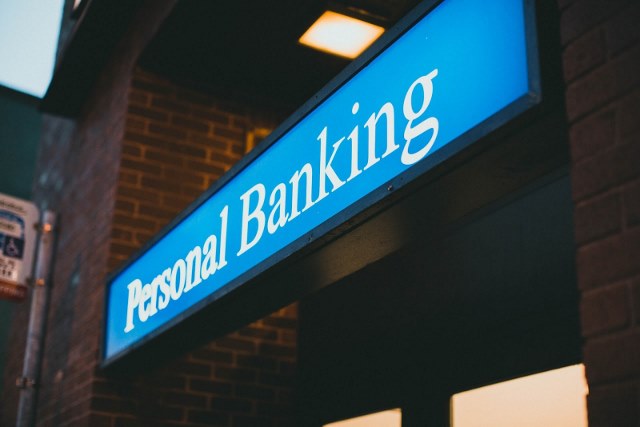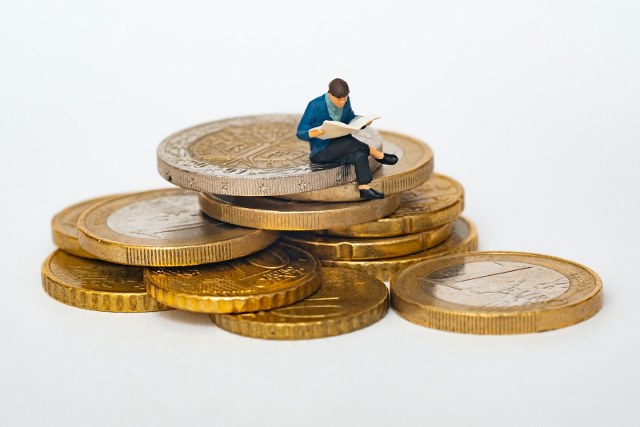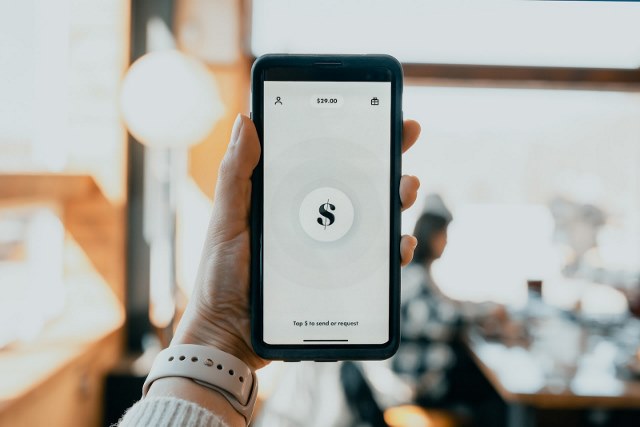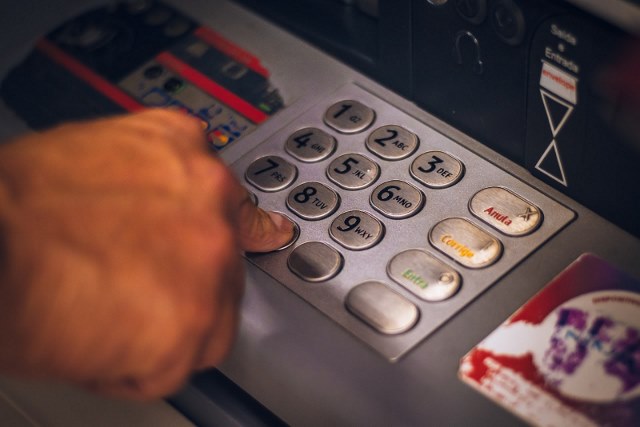Most people don’t feel comfortable sleeping with a wad of cash under their pillows, so we deposit our paychecks into savings accounts instead. However, selecting the appropriate bank or credit union account can be difficult, particularly for individuals unfamiliar with the financial system.
What, exactly, is a bank, anyway? How do credit unions work? How can one determine which bank is superior to another or which savings account is the most lucrative?
This guide covers the steps involved in opening a bank account and depositing money into it, as well as bank versus credit union differences.
Let’s start by learning some essential banking 101 terms everyone should know.
Bank
What, then, is a bank? This is usually a physical location for financial institutions that store, lend, and transfer money. Some financial institutions are only accessible over the Internet. Most have physical locations. Some banks engage in the buying and selling of various types of securities.
Annual Percentage Yield
The interest rate given by the bank on your savings account is directly related to the annual percentage yield. Hence, the Annual Percentage Yield (APY) is the yearly rate of interest paid on a deposit.
Credit Union

A credit union is a non-profit organization, unlike business banks, run to make money. Union members or those employed by the members run it. However, a credit union, like a bank, handles deposits and loans, moves money around, and even makes investments for its members.
Automated Teller Machine
These are cash machines that perform financial transactions. Examples are taking deposits, giving out cash, facilitating account transfers, and disclosing account balances. ATMs can also be used to pay back loans.
Available Balance
A person’s “available balance” refers to the sum of money in their account, which they can withdraw without delays. Any restrictions or limits placed on the account are considered when calculating the available balance.
Bank Statement
A regular report of what’s going on with a customer’s account. This statement represents a certain amount of time, usually a month, and shows all transfers, cashouts, and recurring payments and shouldn’t be confused with your annual consumer report.
Beneficiary
Who a bank account owner names to receive the proceeds through a will, trust, insurance policy, retirement plan, annuity, or other financial arrangement. When the account holder dies, the money goes to the beneficiary.
Automatic Bill Payment

Customers can authorize a monthly repeating payment to a particular company, like a cable provider, through automatic bill payment. Automated Clearing House, a global electronic network for financial transactions, facilitates this cashless approach.
Billing Cycle
This is how long it takes for your bank to send you a bill. Most billing rounds happen once a month.
Canceled Check
This term describes any check already cashed, signed, and charged to the holder’s account. Canceled checks are no longer refundable.
Cashier’s Check
The monies in an account holder’s account are used to cover the cost of a cashier’s check. Then the bank’s resources are used to back the cashier’s check. People who receive checks occasionally ask for a cashier’s check so they know the funds are accessible and that the check won’t bounce.
So what’s all the noise about banks? Time to find out.
Why Should You Trust a Bank?

If you are unfamiliar with banking alternatives or have resided in countries with unreliable banking systems, why bother using the bank’s services in the first place? It is undoubtedly easier nowadays to avoid opening a bank account. In fact, about 77 million Americans are account holders or planning to open one online.
Prepaid debit cards enable users to do in-person and online shopping, bill payment, and ATM withdrawals, much like bank account holders. There are several negatives to using a prepaid debit card, but the IRS will transfer your tax refund to one, and several businesses will fund it with your paycheck.
PayPal and Venmo are two online businesses that allow money transfers without needing a bank account. Paychecks can be cashed at Walmart or a check-cashing store and bills can be paid in person at a Walmart Money Center or a check-cashing store, allowing you to use an all-cash arrangement.
If, on the other hand, you can satisfy the fundamental requirements for opening a bank account, you could appreciate the many advantages of using a bank, especially the safer handling of your hard-earned money.
What to Look for in a Bank?
Now that you’ve determined the kind of financial institution that most piques your interest, it’s time to start digging into the specifics. When comparing different banks, there are a few factors that you should keep in mind regardless of the sort of account you have.
Bank Interest Rates
The more time you keep your funds on deposit with some financial products, like certificates of deposit, the higher the rate of interest you will receive on that deposit.
FDIC or NCUA Insurance Coverage
So, what exactly is FDIC insurance? It’s a guarantee that, regardless of whether the bank fails, you’ll be entitled to get at least some of your money (within the parameters of your account’s terms and conditions).
It’s unlikely you’ll ever need the FDIC or NCUA’s insurance on your deposits, but if you do, you’ll be glad your bank or credit union offers it. Most bank websites include their member ID number at the bottom. If you still need clarification, another option is to contact the bank; nonetheless, the right institutions should have the appropriate form of insurance.
Bank Charges
Fees are usually part of the way that traditional banks work. Online banks could be the best option if you don’t require a bank with a physical location. You can avoid penalties associated with not maintaining a minimum amount, using ATMs not part of your network, and other situations by banking with an online bank.
ATMs, Apps, and Convenience

Picking a bank that lets you deposit and withdraw money in multiple ways provides more options. People too busy to make the trip to the bank’s physical location may appreciate the convenience of mobile banking and Internet banking.
One last thing to consider is how many ATMs are in the area. With over 13,000 ATMs nationwide, Wells Fargo provides its customers with great convenience.
Customer Service
Assisting customers at all hours of the day and night is a must in the modern banking world. Thus, customers of many different banks, including TD Bank, can access customer assistance around the clock.
Additional Banking Services
You should look for a bank that offers interest on your savings if you use basic banking services like a checking account. Online banks like Ally Bank have no minimum balance requirement, where you can earn interest on your money.
How to Choose the Best Bank Account for Your Need
Usually, you’ll pay your money into four types of accounts when using a bank. These types of account types include:
- Savings account
- Checking account
- Money Market Account (MMA)
- Certificate of Deposit (CD)
Most electronic payments, including those made with a debit card or ATM, must first be deposited into a bank account. In some banks, savings accounts can be an excellent way to lower the cost of maintaining a current account at some banks.
Right now, it’s not likely that you’ll discover a savings account with a high-interest rate. Nevertheless, a savings account is still viable for holding a rainy-day fund.
However, you should chat with a qualified financial counselor about investing for a higher return as your net worth grows. Meanwhile, minimizing debt and negotiating the lowest interest rate possible on any loans you take out is a surefire, risk-free strategy for building wealth.
So you asked how banks generate revenue. One effective method is to increase interest rates on loans. You can avoid adding to the bank’s bottom line by shopping for a better rate.
How to Open Bank Account

The following step is to open an account once you have determined which bank account suits you. Take the following steps:
Get together all the necessary documents and info: The items below are required for setting up a bank account:
- Full name
- Date of birth
- Address
- Valid driver’s license or valid passport
- Social Security number or tax ID number
Complete the Application Form
You should be able to submit your application to most financial institutions, including banks and credit unions, online. If you’d rather speak with a real person, you may always stop by the branch of your bank. If the bank doesn’t offer an online submission platform, customers may have to download, spring, sign, and post in your application.
Make a Deposit
After opening an account, you should receive instructions on how to make deposits from your financial institution. In most cases, you can pick from the following options:
a. Put money in person
b. Send in a cheque or money order
c. Move money from another account
d. Have your company send a direct deposit
Summary
With your newfound knowledge of Banking 101 understanding the basics will be more straightforward for you to make informed financial decisions. With the advice in this guide, you may use the simplest and most influential financial tools to work toward financial independence.
You can receive a small return on some of the most fundamental banking accounts, such as a savings account. Still, more importantly, you demonstrate to the financial world that you can be financially responsible.



